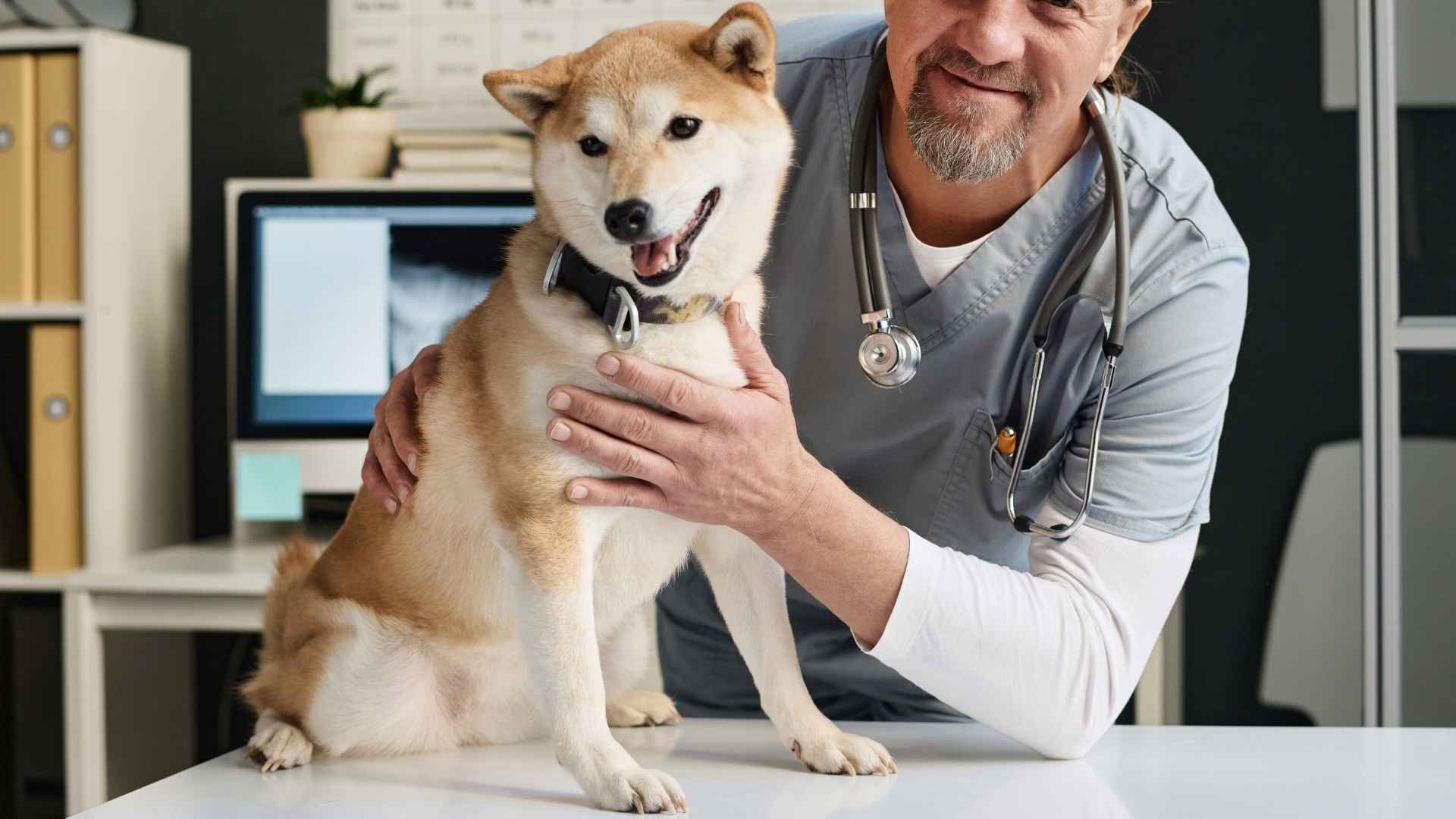When picking the perfect pup, most pet parents think about size, temperament, and energy levels—but health should be high on the list too! Whether you’re living in a cozy city apartment or have room to roam in a big backyard, choosing a dog that’s not only a great fit for your lifestyle but also less prone to many health issues can make a world of difference.
After all, no one wants to see their furry friend feeling unwell, or make endless visits to the vet. The good news? Some dog breeds are known for their robust health and lower risk of common diseases. These breeds tend to live longer, happier lives—and keep you smiling right along with them.
In this blog, we’re diving into dog breeds that keep the doctor away—the ones that bring joy, companionship, and a little peace of mind thanks to their sturdy genes and easygoing wellness. Let’s meet them!
Dog Breeds That Keep The Doctor Away
1. Chihuahua

Tiny but full of personality, the Chihuahua is more than just a cute lapdog—it’s also one of the healthiest dog breeds out there.
While they avoid many health problems common in larger breeds, Chihuahuas do have a few concerns to watch for. Owners should work with their veterinarian to monitor for heart issues, patellar luxation (that signature “skipping” step), and eye conditions, especially as they age.
Their tiny jaws also call for small-breed dog food, and puppies should be fed multiple small meals to avoid dangerous drops in blood sugar.
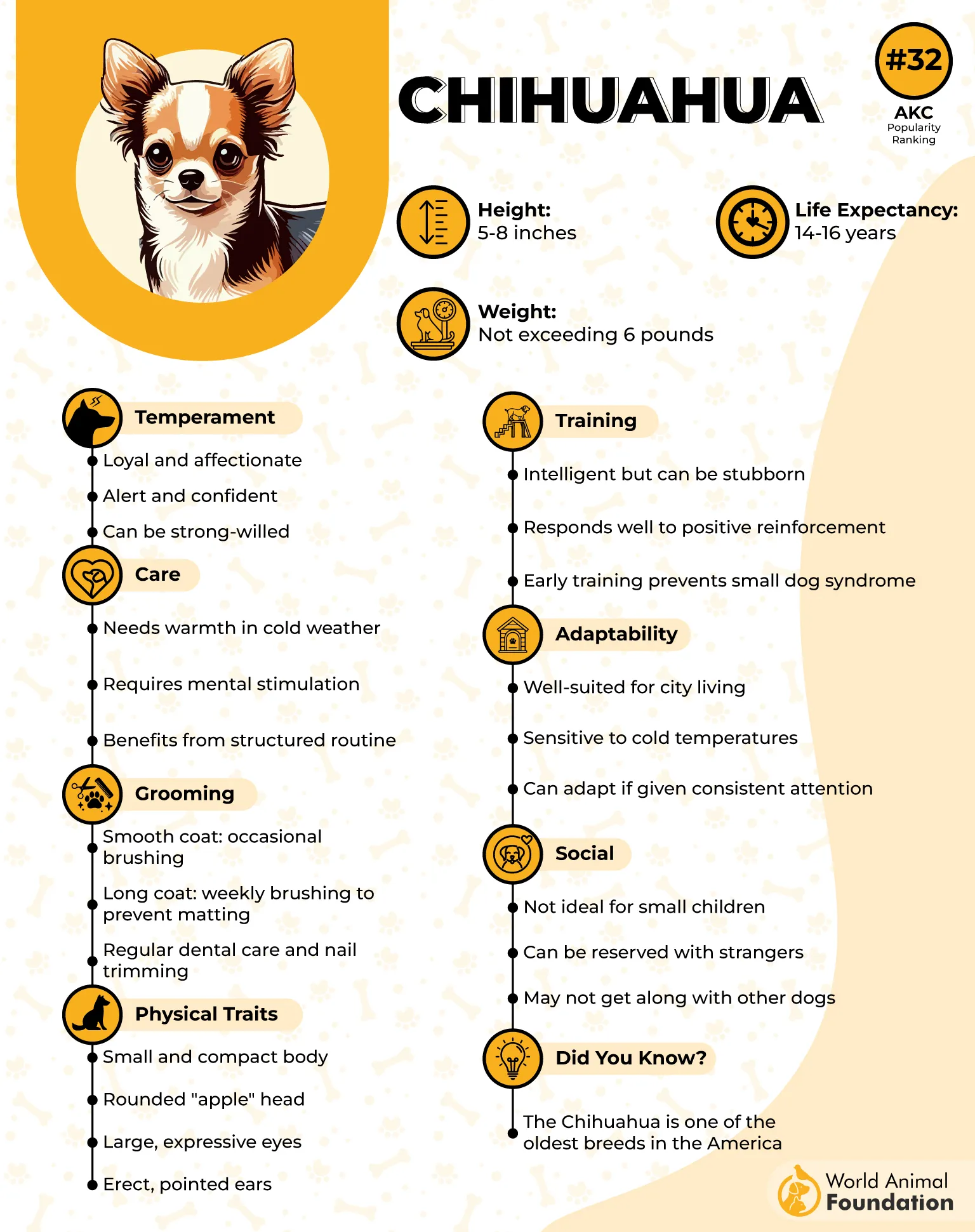
Weighing in at just 5–6 pounds, these toy-sized pups are known for their long lifespan, often living between 12 to 18 years. They’re affectionate, alert, and just as happy snuggling in your arms as they are zipping around the house with surprising bursts of energy.
Despite their small size, Chihuahuas are bold, vocal, and often act much bigger than they are—sometimes even challenging larger dogs! They’re loyal to their family and can be a little wary around strangers, states Britannica.

Though trainable and smart, their petite build can make certain training tasks tricky. Best suited for adults or seniors with calm households, these spunky pups might be too delicate for very young children. Their bark might be a little much for some, but it certainly helps them shine as mini watchdogs.
2. Shiba Inu

With their foxy face, plush coat, and curled tail, Shiba Inus are as charming as they are independent. One of Japan’s oldest native breeds, these spirited dogs were originally bred for hunting and are known for their strong-willed nature, loyalty, and quick reflexes.
Shibas are overall a healthy breed, living an average of 13–16 years. However, like all dogs, they come with a few health concerns. Patellar luxation (a kneecap condition), dental disease, and environmental allergies are the most common.
Regular vet visits, a consistent dental routine, and proper grooming can go a long way in keeping your Shiba in tip-top shape. Bathing and ear cleaning may also help with allergy-related issues.
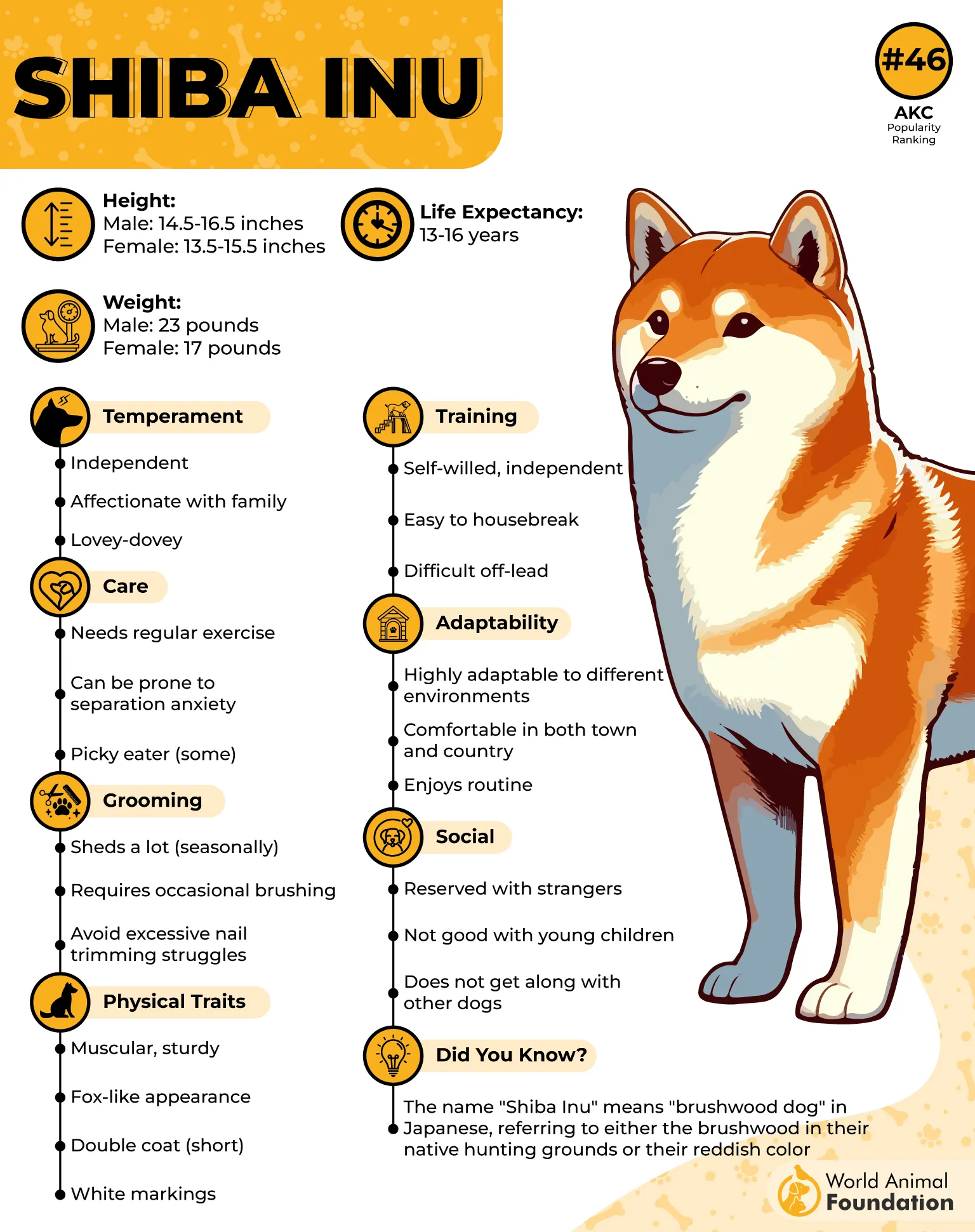
Shiba are often compared to cats, not just for their clean habits, but also for their aloof yet affectionate personality. While they can be incredibly loving, Shibas are best suited for experienced dog owners who appreciate a smart, stubborn companion, states PetPlan.
These dogs do shed—a lot. Expect year-round hair, with heavier seasonal shedding in spring and fall. Regular brushing is a must. Though not hypoallergenic, their self-grooming habits help keep them looking tidy.
Shibas also tend to be a little anxious and may show signs through pacing, barking, or restlessness. Early socialization, mental stimulation, and a calm environment can help ease their nerves and bring out their confident side.
3. Basenji

Known as Africa’s “Barkless Dog,” the Basenji is a compact, elegant hound with a charming mix of independence and intelligence. With their sleek build, curled tail, and expressive, wrinkled forehead, these dogs are as striking in appearance as they are in personality.
While they don’t bark, Basenjis aren’t silent—they communicate with unique sounds like yodels or chortles. Often likened to cats for their self-grooming habits and aloof nature, they appeal to experienced dog owners who appreciate a clean, quirky companion with energy to spare.
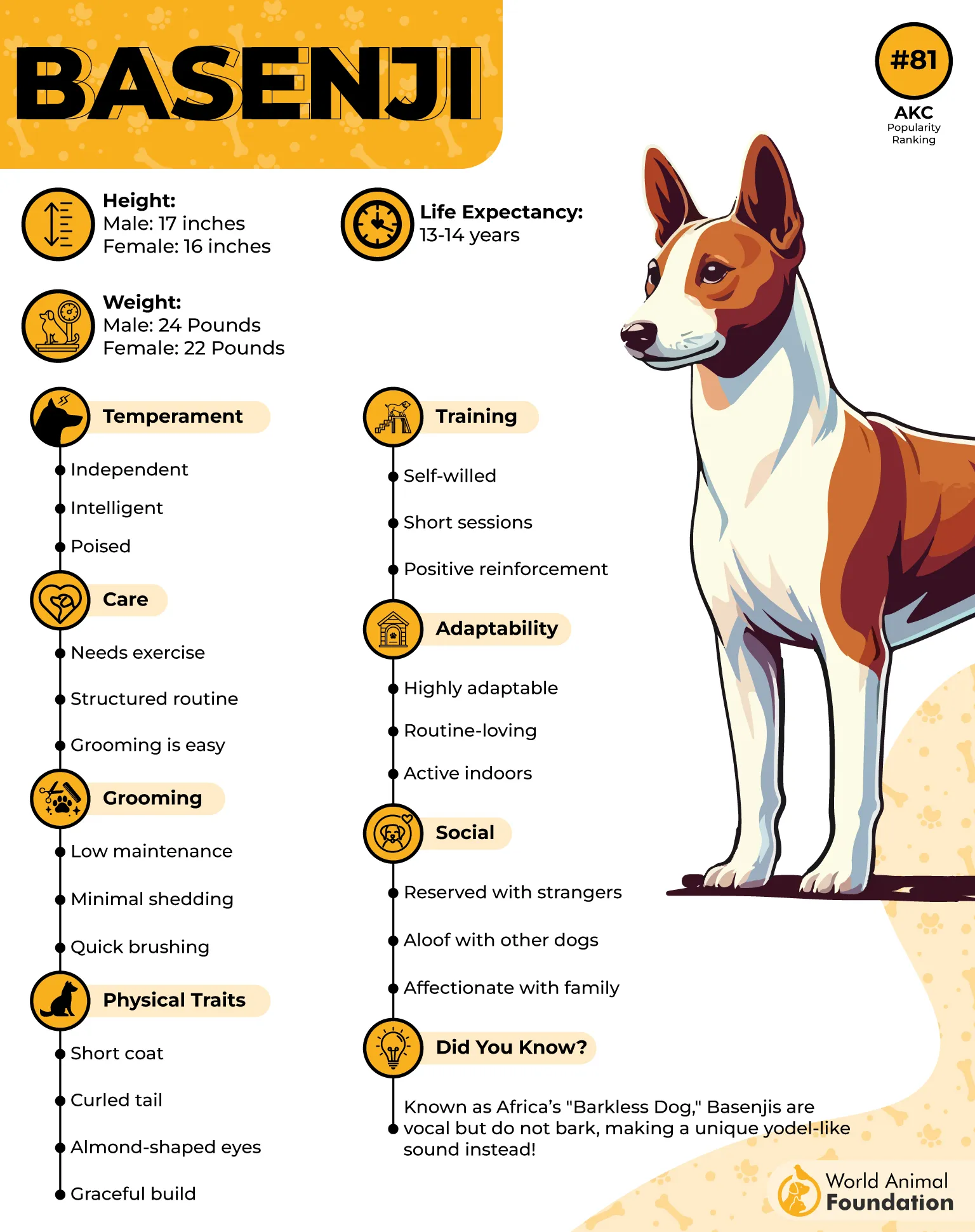
Basenjis are generally healthy and have an average lifespan of 12 to 14 years. However, they can be prone to a few genetic conditions. These include Fanconi syndrome (a serious kidney disorder), hip dysplasia, progressive retinal atrophy (PRA), and enzyme-related issues like pyruvate kinase deficiency, which can cause anemia.
Vision issues like Persistent Pupillary Membranes (PPM) may also be present in some puppies. Thankfully, responsible breeders now use DNA testing to screen for many of these conditions before breeding.
To ensure your Basenji lives a long, active life, regular vet checkups, early health screening, and a well-balanced diet are key. Ask breeders about the health history of the puppy’s parents and confirm that genetic testing and screening for hips and eyes were performed.
While the breed may be small in number, Basenji owners are known for their deep devotion, and it’s easy to see why. These spirited pups are resilient, adaptable, and always up for an adventure, whether you’re hiking a trail or exploring the city.
4. Border Collie
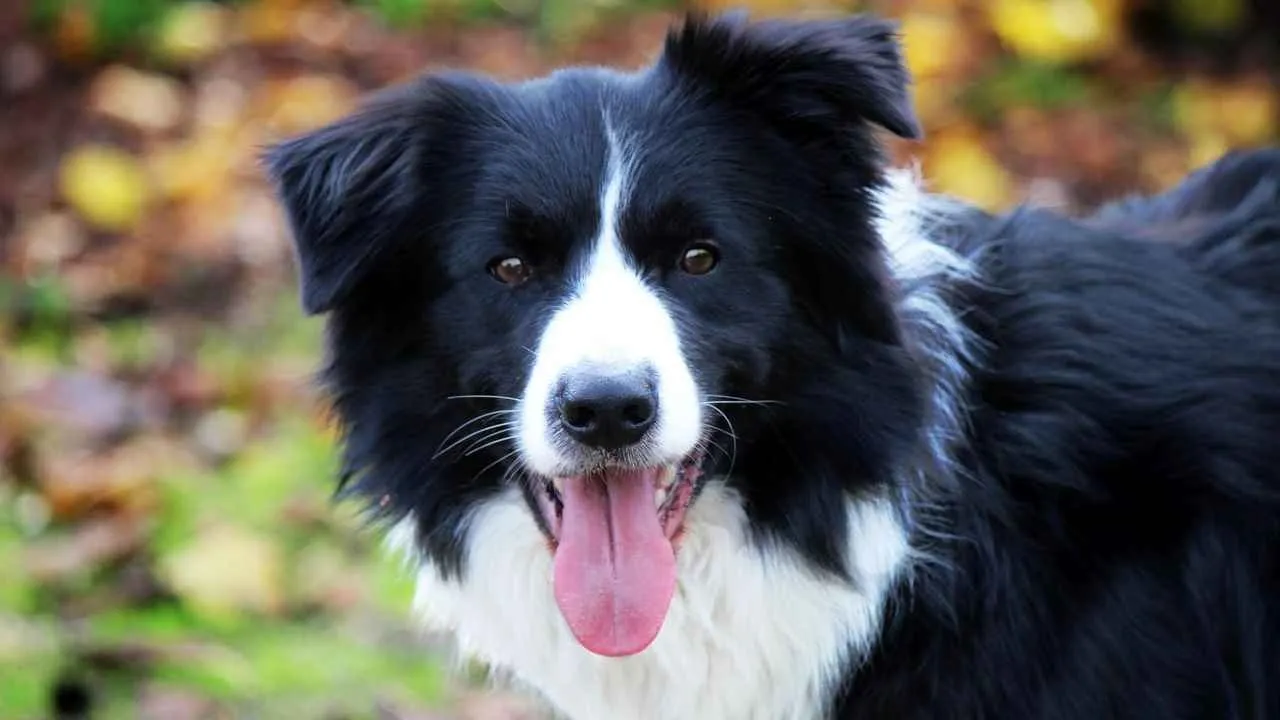
Border Collies are energetic working dogs originally bred in Great Britain to herd livestock. Today, they remain popular not only on farms but also as family pets. Known for their agility and sharp instincts, Border Collies thrive on physical activity and mental challenges.
They need a “job” every day—whether that’s herding, agility training, or simply keeping up on a daily run. If you want a relaxed canine companion, this isn’t the breed for you!
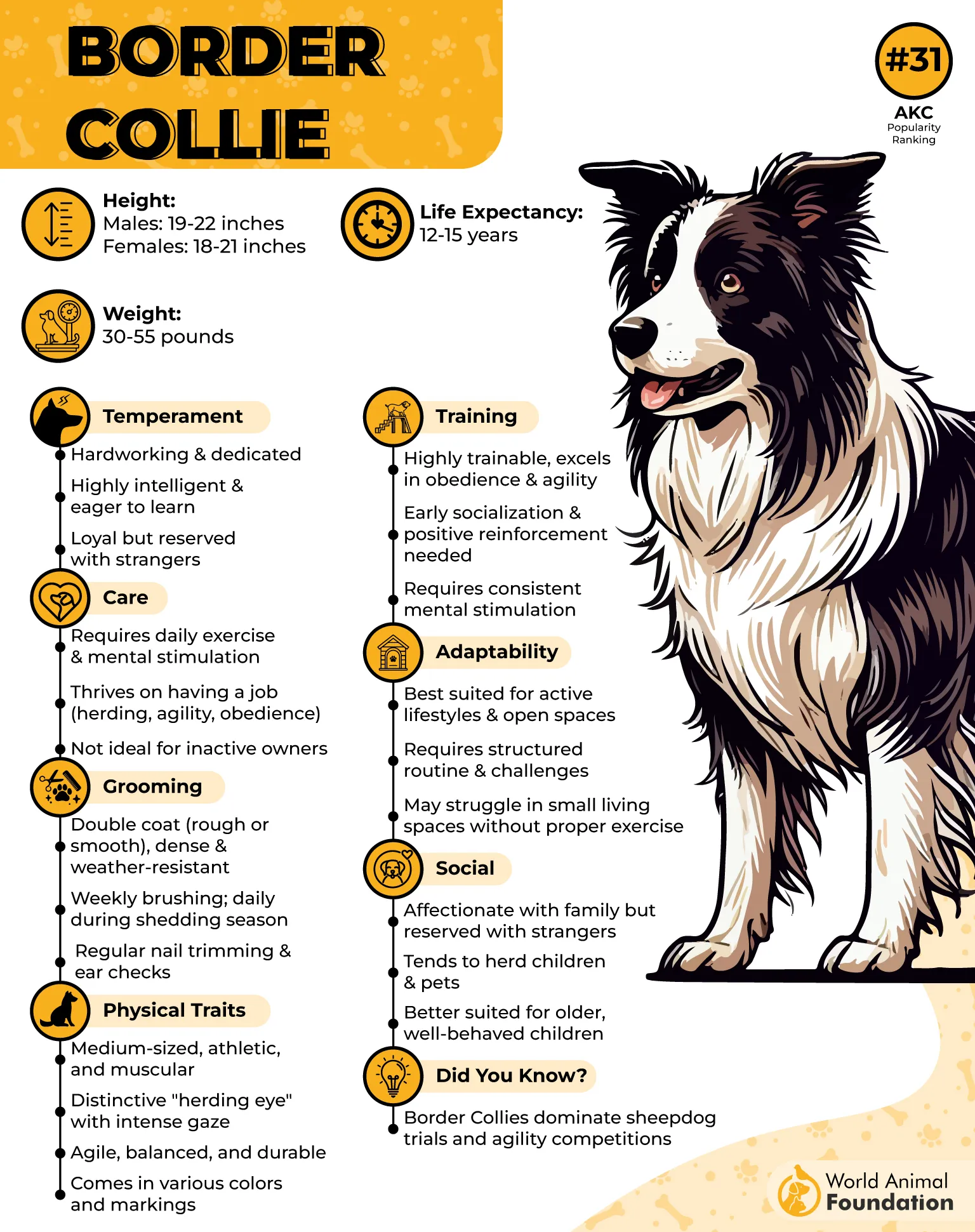
While generally healthy with a lifespan of 12 to 15 years, Border Collies can be prone to certain conditions. Hip dysplasia is common and can cause pain and arthritis if not managed early. Always ask breeders for health screenings like OFA or PennHIP certificates to reduce the risk of this issue.
Other health concerns include epilepsy, a seizure disorder typically appearing between 2 and 5 years old. Signs include limb paddling, stiffness, or unusual behavior during seizures, which usually require medication to control.
Border Collies may also inherit Collie Eye Anomaly, a genetic eye disease that can impair vision or cause blindness. Genetic testing is essential since there’s no effective treatment, states PetMD.
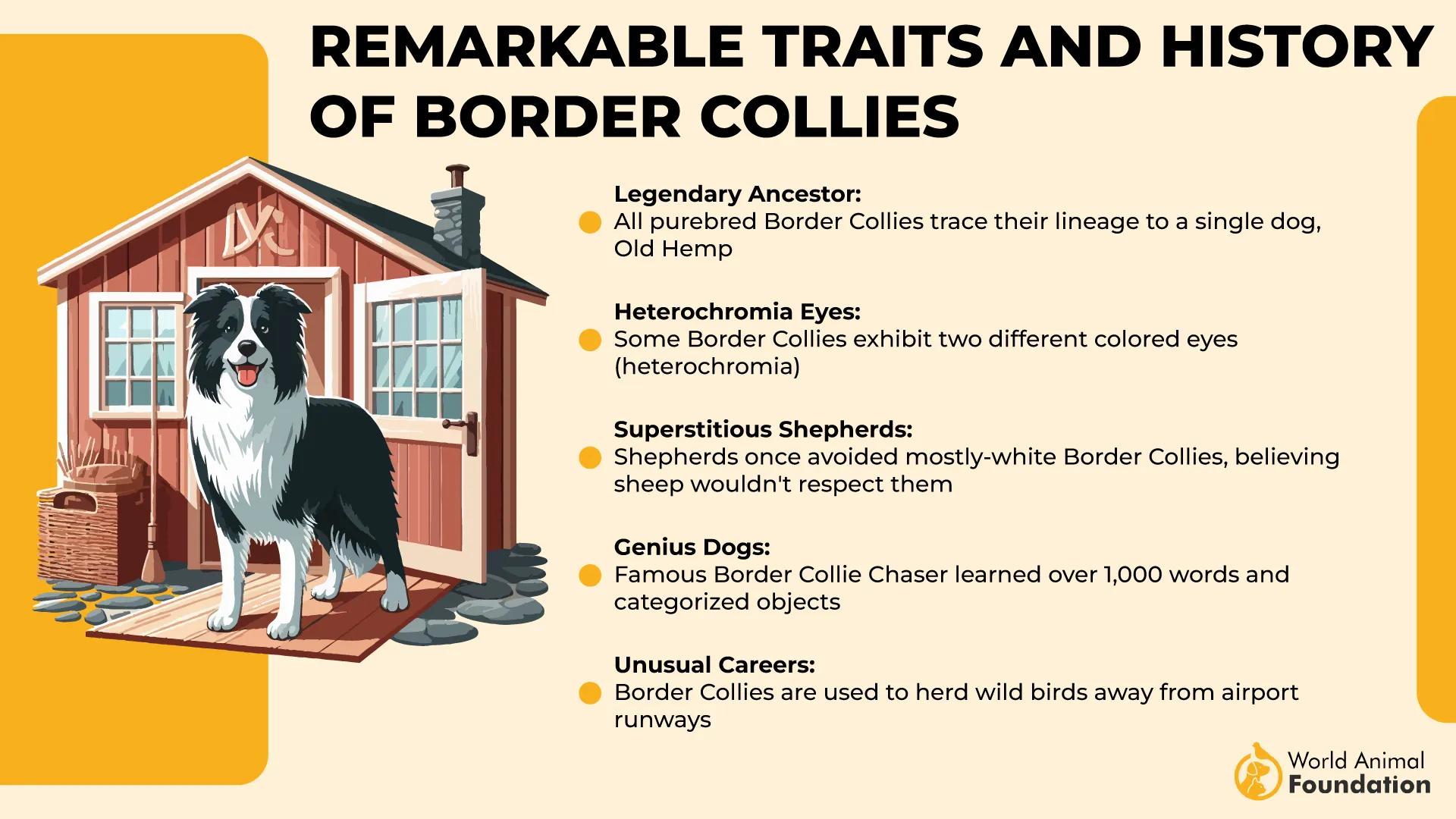
Some Border Collies carry the MDR1 gene mutation, making them sensitive to certain medications and preventatives. Simple tests can identify this mutation to keep your dog safe. Another breed-specific condition is Trapped Neutrophil Syndrome (TNS), which compromises the immune system and, sadly, is fatal early in life. Thankfully, breeders use genetic screening to avoid passing this on.
Though these health risks exist, many Border Collies live vibrant, active lives with proper care, regular exercise, and regular checkups. Staying informed and proactive with health screenings will help your energetic buddy stay happy and healthy for years to come.
5. Australian Cattle Dog
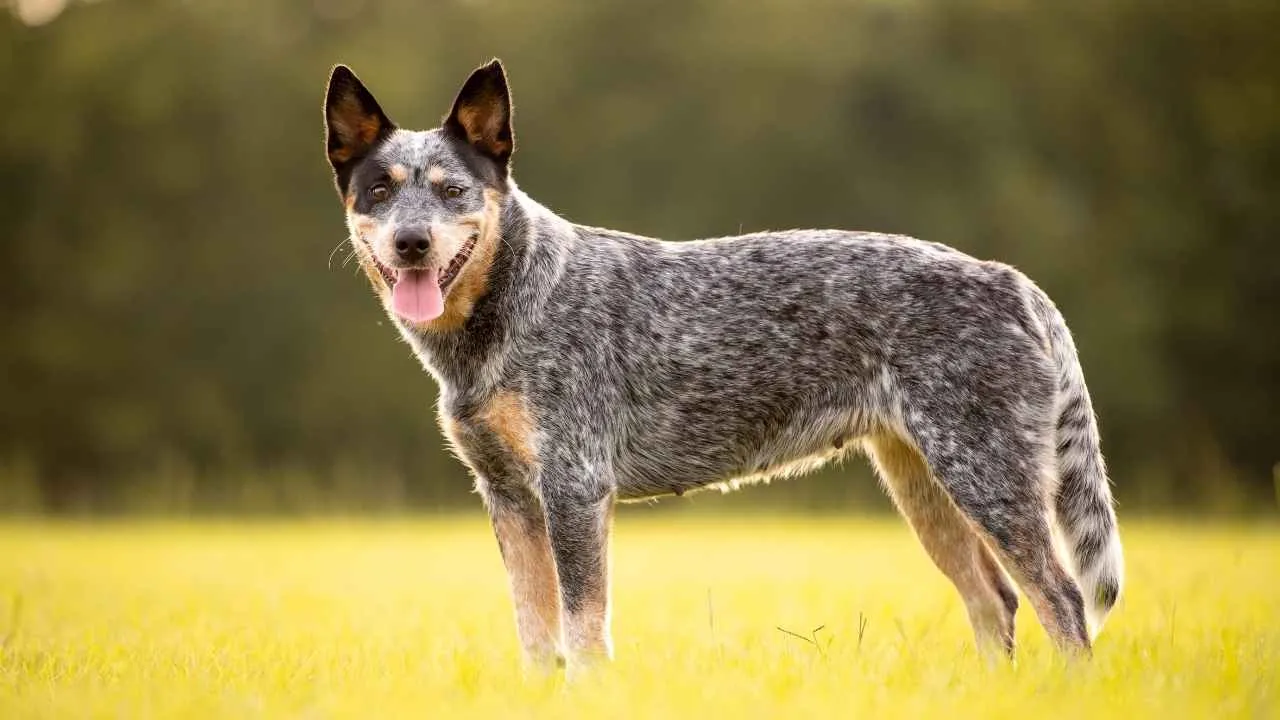
Australian Cattle Dogs, descended from dingoes and bred to herd livestock, are known for their sharp intelligence and boundless energy. Often called “Blue Heelers” or “Red Heelers” based on their coat colors—blue speckle or red speckle—their name comes from their herding style of nipping at animals’ heels.
This breed is generally healthy and hardy, but there are a few health concerns to keep in mind. Remember, Bluey, an Australian Cattle Dog, holds the Guinness World Record for the oldest living dog, reaching an incredible 29 years!

Australian Cattle Dogs are at high risk of Progressive Retinal Atrophy (PRA). This inherited eye problem causes gradual vision loss, starting with night blindness and eventually leading to total blindness.
Although there’s no cure, most dogs adapt well to vision loss if their environment stays familiar. If your dog starts bumping into things, a vet checkup is a good idea.
Deafness is another inherited condition in this breed. While basic hearing tests can be done at your vet, the more precise “brainstem auditory evoked response” (BAER) test, available at specialty clinics, can confirm it. Although deafness can’t be treated, many deaf dogs live a happy and healthy life, and pet parents rely on hand signals instead of verbal commands.
Hip dysplasia, though less common, can affect some Australian Cattle Dogs. It occurs when the hip joint doesn’t fit properly, causing pain, limping, and reduced activity. If you’re concerned, ask your vet about PennHIP screening—a specialized X-ray to assess the risk of hip dysplasia early on.
6. Belgian Malinois

Belgian Malinois were bred as versatile farm helpers, and to perform tasks from guarding property to herding livestock and pulling carts. Today, Malinois are prized not just for herding but also for their work in police and military units worldwide.
Their intelligence, stamina, and loyalty make them ideal for high-pressure roles, like the courageous Malinois who helped Navy SEAL Team 6 during the Osama bin Laden mission.
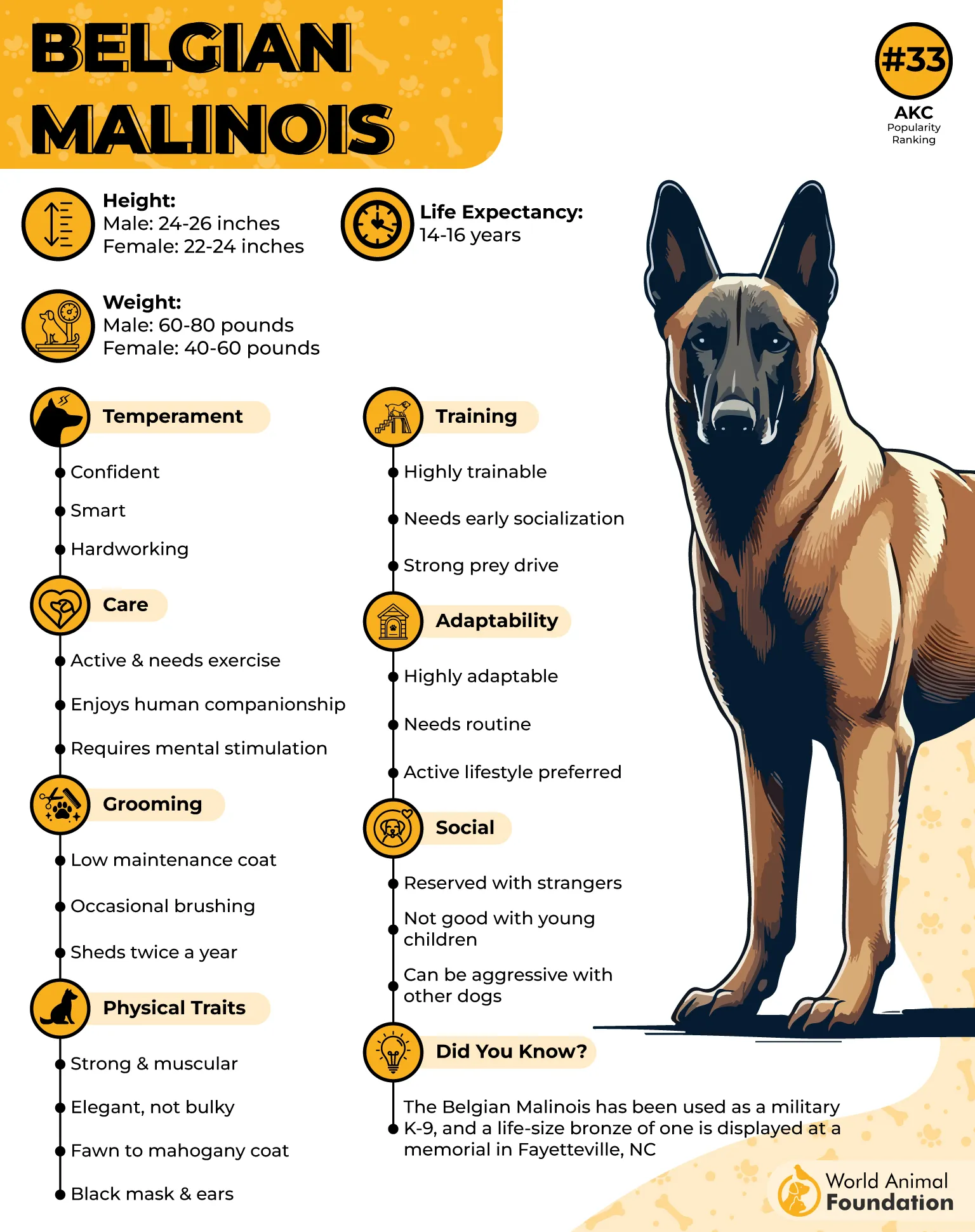
Belgian Malinois are generally a healthy and robust breed. But they benefit from regular vet checkups. One serious concern is bloat, common in deep-chested breeds, where the stomach fills with gas and may twist, cutting off blood flow. Immediate veterinary attention is vital if your dog shows signs like non-productive retching, restlessness, a swollen abdomen, or unusual postures.
Epilepsy, an inherited condition often detected early, requires lifelong medication and ongoing monitoring. Joint issues such as hip and elbow dysplasia can cause stiffness and arthritis over time, making weight management and mobility checks important.
Eye problems—including cataracts, progressive retinal atrophy, pannus (which increases UV sensitivity), and persistent pupillary membranes—can affect vision and quality of life. Regular eye exams are recommended to catch these early.
Hypothyroidism is another possible issue, characterized by low thyroid hormone levels. Annual blood tests help detect and manage this condition promptly.
As noted by WebMD, active families are the best fit for Belgian Malinois. These high-energy dogs thrive with daily exercise and mental challenges such as hiking, jogging, obedience training, or dog sports. They also love playtime with their families and need constant companionship to stay happy and balanced.
7. German Pinscher

The German Pinscher hails from Germany, where it was bred to guard farms and hunt rodents. The breed nearly vanished after the World Wars but was saved thanks to Werner Jung and his black and red German Pinscher. Today, these dogs are cherished for their energy and loyalty.
German Pinschers typically live 12 to 14 years and are generally healthy, though they can be prone to a few health issues.
One common concern is hip dysplasia, a joint issue causing pain and mobility problems. Managing weight, using joint supplements, and avoiding excessive strain can help ease symptoms, while treatment options range from medication to surgery.
Eye health is important, as German Pinschers may develop cataracts—cloudy lenses leading to vision loss—and corneal dystrophy, where crystals form on the cornea and impair sight. Regular eye exams can catch these early. While cataracts can often be treated surgically, corneal dystrophy has no cure. Watch for signs like eye rubbing, color changes, or cloudy pupils, and seek vet care promptly.
Another inherited condition to be aware of is Von Willebrand disease (vWD), which affects blood clotting and raises the risk of excessive bleeding. If you’re getting a puppy, ask the breeder about vWD testing for the parents to avoid surprises down the road.
Conclusion
In conclusion, choosing the right dog breed can play a big role in keeping vet bills low and ensuring a happy dog with fewer health concerns. Whether you prefer small dogs like Shih Tzus or medium-sized breeds such as the German Shorthaired Pointer, focusing on dog breeds native to their regions often means better overall physical health and fewer inherited health conditions.
Popular dog breeds like Cavalier King Charles Spaniels may have their own set of challenges, such as juvenile cataracts or kidney disease, but with proper care, they can thrive into their senior years. Active breeds and sight hunters, as well as big dogs and purebred dogs, all require attention to their unique needs to stay healthy.
Ultimately, understanding each breed’s typical health profile helps future pet owners make informed choices, resulting in fewer trips to the vet and a joyful life for both dogs and their families.


